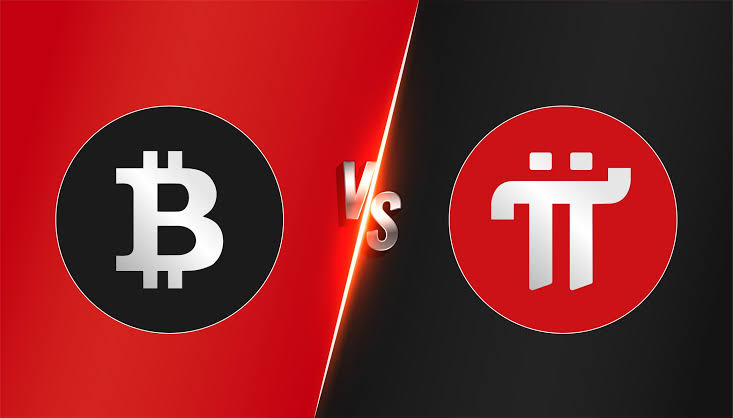In the world of cryptocurrency, mining serves as the backbone of many blockchain networks, allowing for the creation and validation of new transactions. While Bitcoin has long reigned as the king of cryptocurrencies, a newcomer on the scene, Pi Network, has introduced a novel approach to mining. In this article, we will compare the two mining processes, highlighting their differences and unique features.
Bitcoin Mining:
1. Energy-Intensive: Bitcoin mining is notorious for its energy consumption. The Proof-of-Work (PoW) algorithm employed by Bitcoin requires miners to solve complex mathematical puzzles, a process that demands significant computational power and, consequently, large amounts of electricity. This has raised environmental concerns and led to debates about Bitcoin’s carbon footprint.
2. Specialized Hardware: Bitcoin miners often invest in Application-Specific Integrated Circuits (ASICs), which are highly specialized and expensive hardware designed specifically for mining. This specialization makes entry into Bitcoin mining challenging for the average individual, as it requires a substantial upfront investment.
3. Centralized Pools: To enhance their chances of earning rewards, many Bitcoin miners join mining pools. These pools centralize mining power, raising concerns about the centralization of a decentralized network. Large mining pools can potentially wield significant influence over the Bitcoin network.
4. Decreasing Rewards: Bitcoin’s protocol is designed to reduce block rewards by half approximately every four years in an event known as the “halving.” This diminishing reward structure can reduce incentives for miners over time, especially for smaller miners.
5. Highly Competitive: The Bitcoin mining landscape is fiercely competitive, with only a handful of miners or mining pools reaping substantial rewards. The competition has driven miners to search for the cheapest sources of electricity and deploy mining operations at an industrial scale.
Pi Coin Mining:
1. Energy-Efficient: Pi Network takes a radically different approach by utilizing the Stellar Consensus Protocol (SCP), which is designed to be energy-efficient and eco-friendly. This approach aims to address the environmental concerns associated with cryptocurrency mining.
2. Accessible: Pi mining can be carried out on standard smartphones, making it accessible to a much broader user base. This inclusivity contrasts sharply with Bitcoin mining, which often requires expensive hardware.
3. Decentralization: Pi Network emphasizes decentralization by allowing users to mine on their own devices, rather than relying on large mining farms. This approach aligns with the core principle of decentralization that cryptocurrencies were founded upon.
4. Constant Rewards: Pi Network offers constant mining rewards, providing ongoing incentives to users. Unlike Bitcoin, where rewards decrease over time, Pi miners receive rewards at a steady rate.
5. Community-Focused: Pi Network’s mission is centered around inclusivity and community involvement. It seeks to make cryptocurrency accessible to everyday people, fostering a sense of participation and engagement among its users.
In Summary:
While both Bitcoin and Pi Network’s Pi coin rely on mining, their approaches and underlying philosophies differ significantly. Bitcoin’s energy-intensive, competitive, and specialized mining process has come under scrutiny for its environmental impact and potential centralization. In contrast, Pi Network prioritizes energy efficiency, accessibility, decentralization, and community engagement. Its unique approach seeks to make cryptocurrency mining more inclusive and sustainable.
Ultimately, the choice between Bitcoin and Pi Network’s Pi coin mining depends on individual preferences and priorities within the broader blockchain landscape. Bitcoin remains a stalwart in the cryptocurrency world, while Pi Network offers an alternative vision for a more accessible and eco-friendly future of mining and blockchain technology. Read More












I am sending you 1π! Pi is a new digital currency developed by Stanford PhDs, with over 47 million members worldwide. To claim your Pi, follow this link https://minepi.com/daiv101 and use my username (daiv101) as your invitation code.